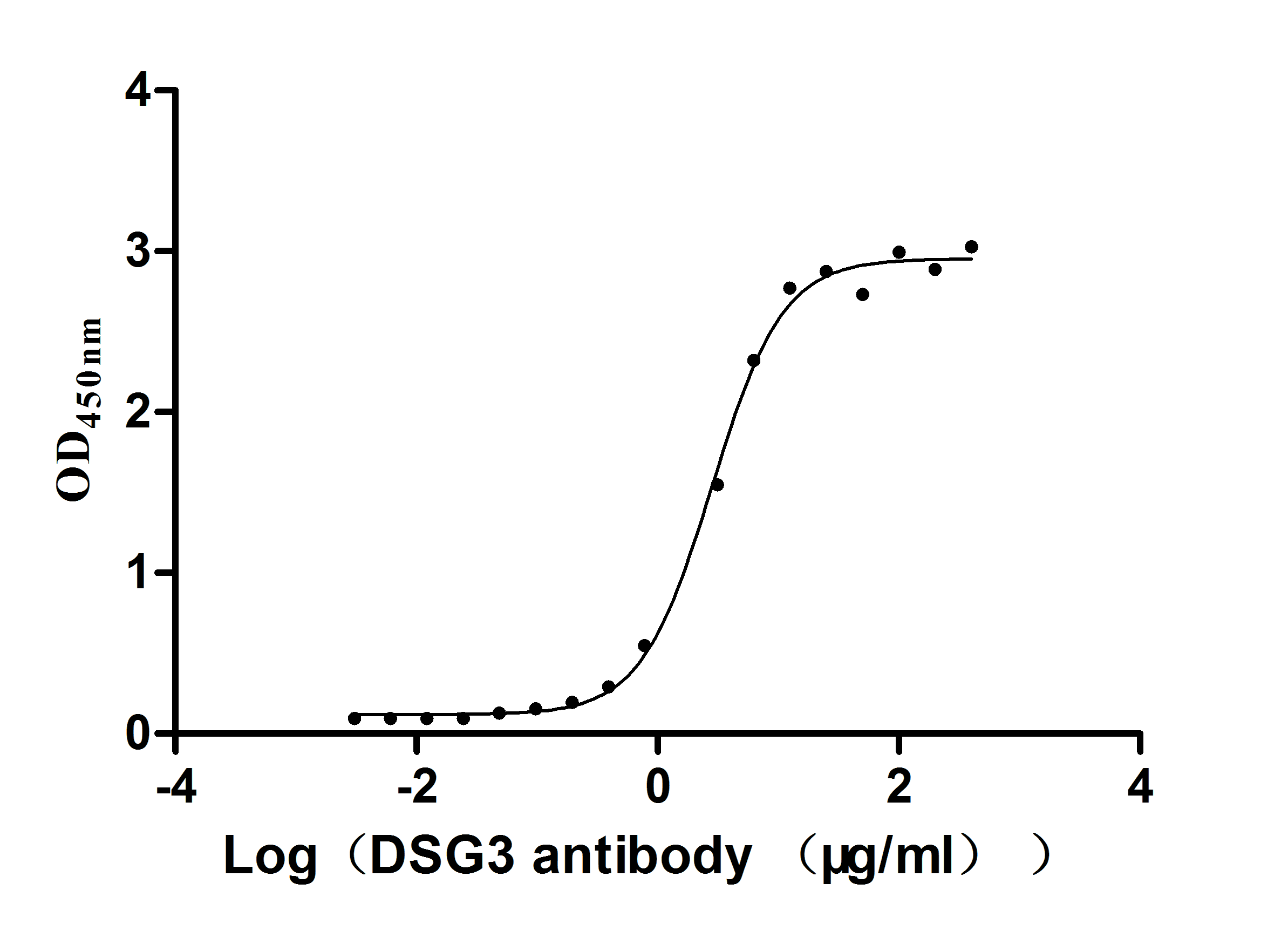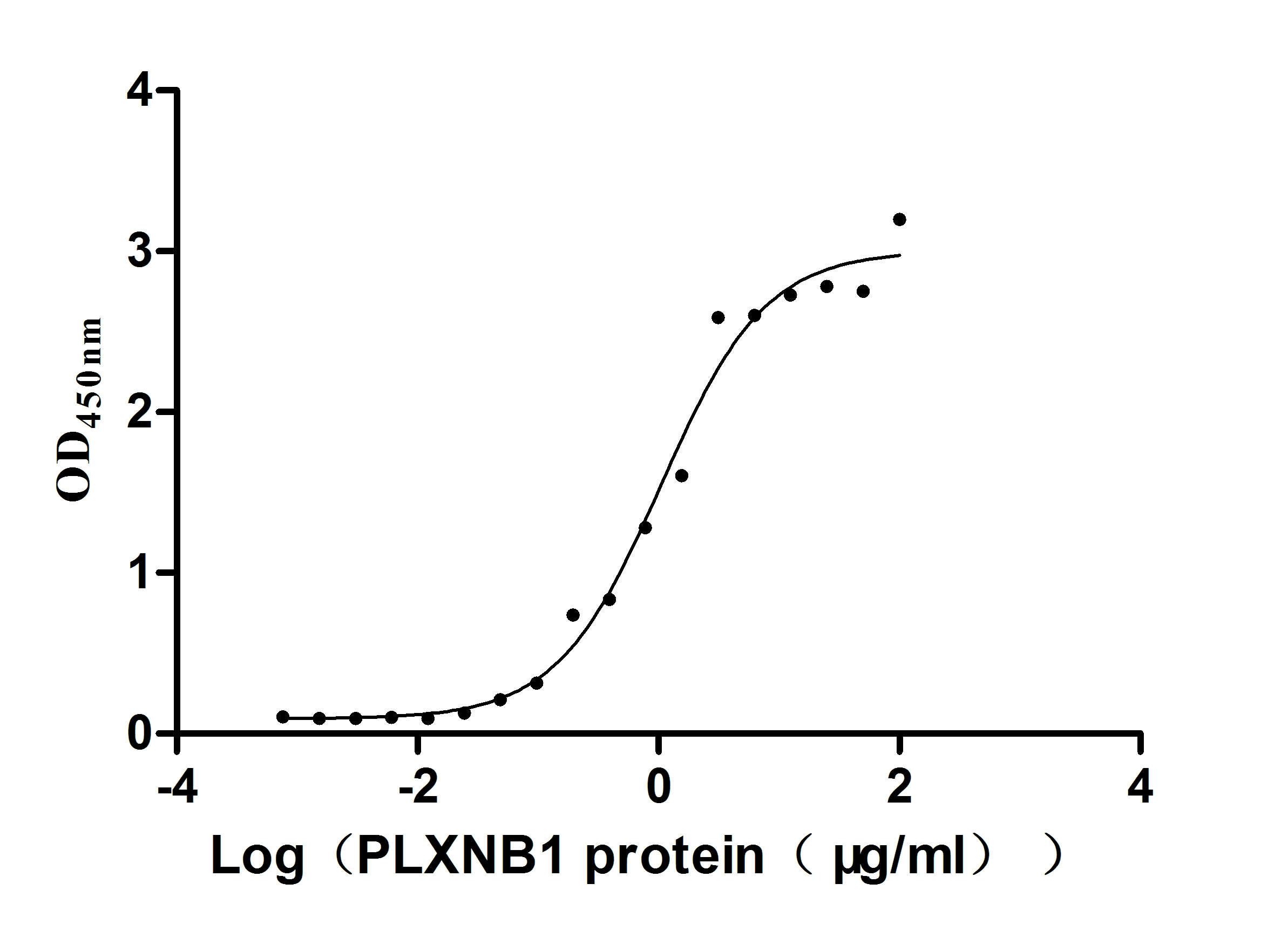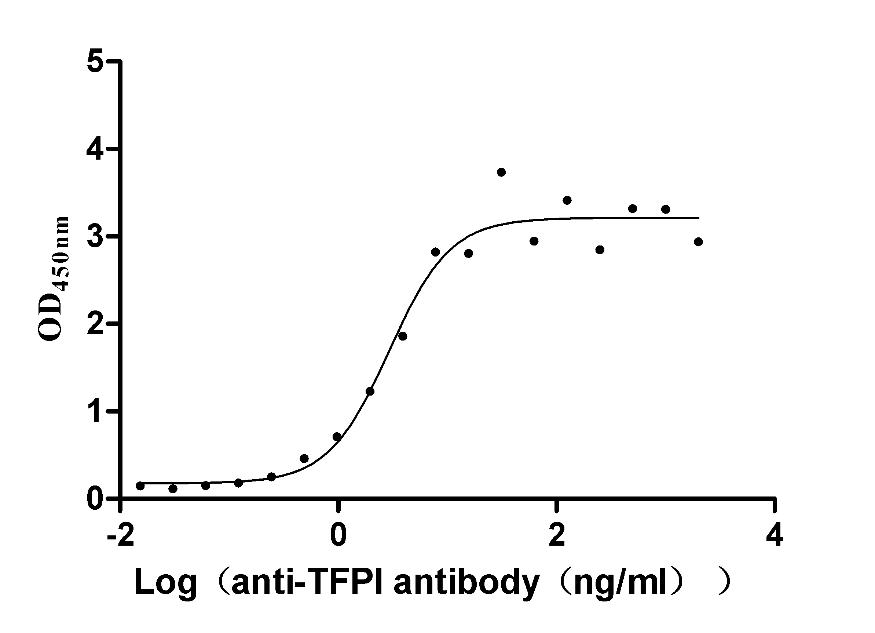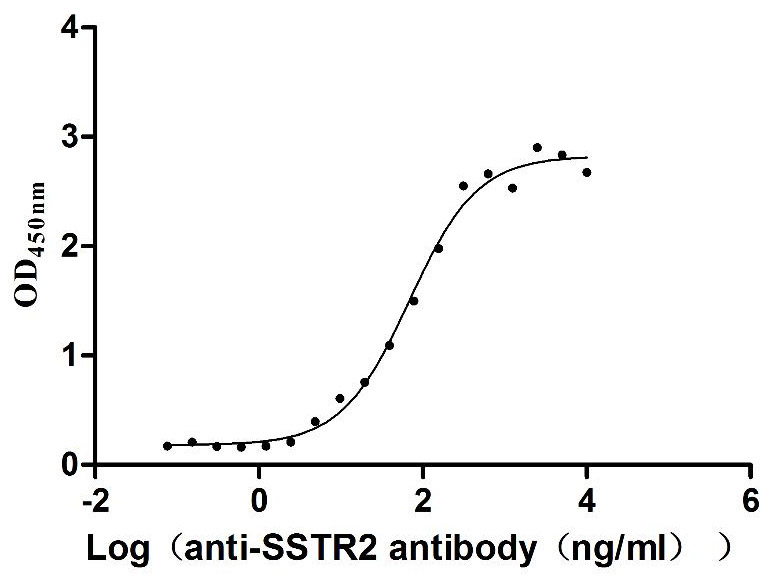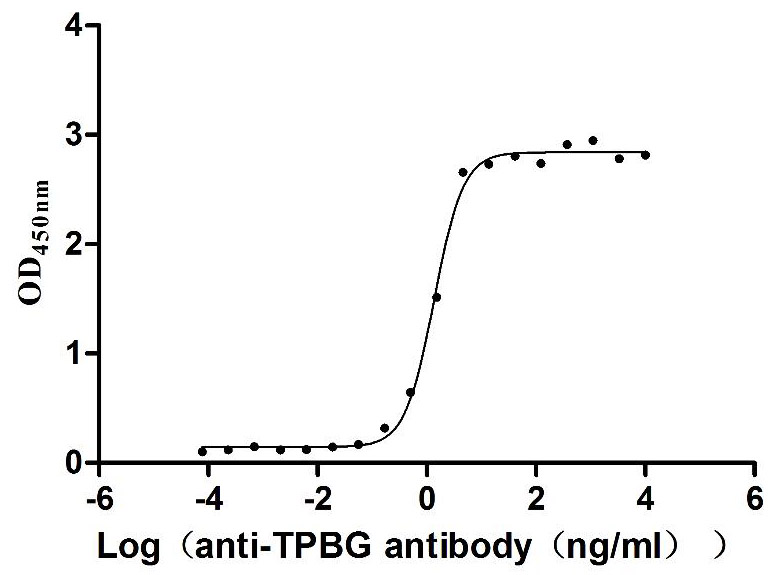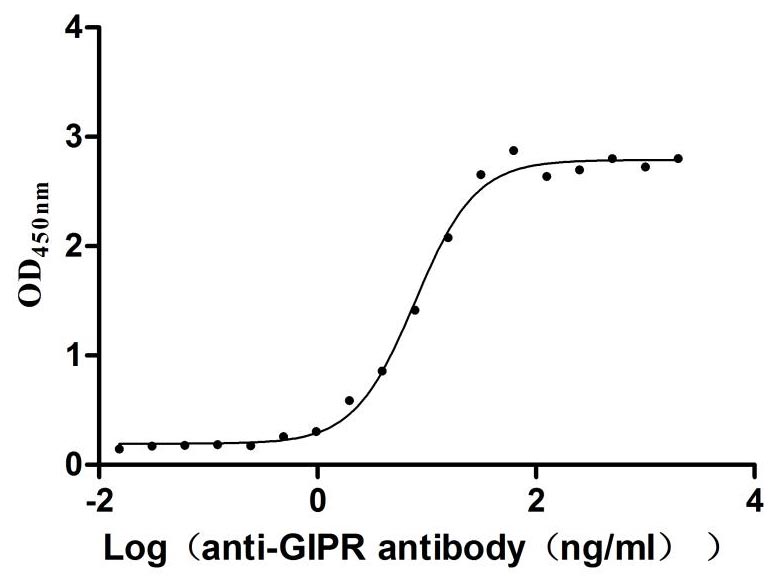Recombinant Rat Potassium voltage-gated channel subfamily KQT member 2 (Kcnq2), partial
-
中文名稱:大鼠Kcnq2重組蛋白
-
貨號(hào):CSB-YP012090RA
-
規(guī)格:
-
來源:Yeast
-
其他:
-
中文名稱:大鼠Kcnq2重組蛋白
-
貨號(hào):CSB-EP012090RA
-
規(guī)格:
-
來源:E.coli
-
其他:
-
中文名稱:大鼠Kcnq2重組蛋白
-
貨號(hào):CSB-EP012090RA-B
-
規(guī)格:
-
來源:E.coli
-
共軛:Avi-tag Biotinylated
E. coli biotin ligase (BirA) is highly specific in covalently attaching biotin to the 15 amino acid AviTag peptide. This recombinant protein was biotinylated in vivo by AviTag-BirA technology, which method is BriA catalyzes amide linkage between the biotin and the specific lysine of the AviTag.
-
其他:
-
中文名稱:大鼠Kcnq2重組蛋白
-
貨號(hào):CSB-BP012090RA
-
規(guī)格:
-
來源:Baculovirus
-
其他:
-
中文名稱:大鼠Kcnq2重組蛋白
-
貨號(hào):CSB-MP012090RA
-
規(guī)格:
-
來源:Mammalian cell
-
其他:
產(chǎn)品詳情
-
純度:>85% (SDS-PAGE)
-
基因名:
-
Uniprot No.:
-
別名:Kcnq2; Potassium voltage-gated channel subfamily KQT member 2; KQT-like 2; Potassium channel subunit alpha KvLQT2; Voltage-gated potassium channel subunit Kv7.2
-
種屬:Rattus norvegicus (Rat)
-
蛋白長(zhǎng)度:Partial
-
蛋白標(biāo)簽:Tag?type?will?be?determined?during?the?manufacturing?process.
The tag type will be determined during production process. If you have specified tag type, please tell us and we will develop the specified tag preferentially. -
產(chǎn)品提供形式:Lyophilized powder
Note: We will preferentially ship the format that we have in stock, however, if you have any special requirement for the format, please remark your requirement when placing the order, we will prepare according to your demand. -
復(fù)溶:We recommend that this vial be briefly centrifuged prior to opening to bring the contents to the bottom. Please reconstitute protein in deionized sterile water to a concentration of 0.1-1.0 mg/mL.We recommend to add 5-50% of glycerol (final concentration) and aliquot for long-term storage at -20℃/-80℃. Our default final concentration of glycerol is 50%. Customers could use it as reference.
-
儲(chǔ)存條件:Store at -20°C/-80°C upon receipt, aliquoting is necessary for mutiple use. Avoid repeated freeze-thaw cycles.
-
保質(zhì)期:The shelf life is related to many factors, storage state, buffer ingredients, storage temperature and the stability of the protein itself.
Generally, the shelf life of liquid form is 6 months at -20°C/-80°C. The shelf life of lyophilized form is 12 months at -20°C/-80°C. -
貨期:Delivery time may differ from different purchasing way or location, please kindly consult your local distributors for specific delivery time.Note: All of our proteins are default shipped with normal blue ice packs, if you request to ship with dry ice, please communicate with us in advance and extra fees will be charged.
-
注意事項(xiàng):Repeated freezing and thawing is not recommended. Store working aliquots at 4°C for up to one week.
-
Datasheet :Please contact us to get it.
靶點(diǎn)詳情
-
功能:Associates with KCNQ3 to form a potassium channel with essentially identical properties to the channel underlying the native M-current, a slowly activating and deactivating potassium conductance which plays a critical role in determining the subthreshold electrical excitability of neurons as well as the responsiveness to synaptic inputs. Therefore, it is important in the regulation of neuronal excitability. KCNQ2 current is blocked by barium and tetraethylammonium whereas 4-aminopyridine and charybdotoxin have no effect on KCNQ2 current. Tyrosine kinase inhibitors genistein or herbimycin a markedly down-regulate KCNQ2 current. As the native M-channel, the potassium channel composed of KCNQ2 and KCNQ3 is also suppressed by activation of the muscarinic acetylcholine receptor CHRM1.
-
基因功能參考文獻(xiàn):
- RNA interference-mediated silencing of KCNQ2 is a suitable approach to create an ex vivo model for testing the specificity of novel Kv7.2/Kv7.3 agonists. PMID: 29212407
- These results reveal for the first time that a mutation-induced decrease in current sensitivity to PIP2 is the primary molecular defect responsible for Kv7.2-EE in individuals carrying the R325G variant, further expanding the range of pathogenetic mechanisms exploitable for personalized treatment of Kv7.2-related epilepsies. PMID: 27905566
- This study demonstrated that Activation of peripheral KCNQ2 channels relieves gout pain in animal model. PMID: 25735002
- Disruption of calmodulin binding to KCNQ2 also impairs enrichment of heteromeric KCNQ2/KCNQ3 channels at the axonal surface by blocking their trafficking from the endoplasmic reticulum to the axon. PMID: 25077630
- The molecular mechanism of KCNQ2 current suppression mediated by calcium-bound calmodulin, was investigated. PMID: 24349250
- CK2-mediated phosphorylation of calmodulin regulates the M-current, which is tonically regulated by CK2 and PP1 anchored to the KCNQ2 channel complex. PMID: 24627475
- Intratibial injection of MRMT-1 tumour cells decreased KCNQ2 expression & reduced M-current density in small-sized dorsal root ganglia, associated with enhanced excitability of these DRG neurons & hyperalgesic behaviour. PMID: 23352759
- The results of this study suggested a novel mechanism for neuropathic overexcitability and brings focus on M channels and REST as peripheral targets for the treatment of neuropathic pain. PMID: 21345591
- Data suggest that the upregulation of potassium channels containing the KCNQ2 subunit might represent a mechanism to counteract seizures in experimental temporal lobe epilepsy. PMID: 16154661
- Expression of a calmodulin-binding KCNQ2 potassium channel fragment modulates neuronal M-current and membrane excitability. PMID: 16263935
- nodal I(Ks) current is mediated by KCNQ channels, which in large fibres of rat sciatic nerve appear to be KCNQ2 homomers PMID: 16527853
- Several BFNC mutations of KCNQ2 and KCNQ3 disrupt surface expression or polarized surface distribution of KCNQ channels, thereby revealing impaired targeting of KCNQ channels to axonal surfaces as a benign familial neonatal convulsions (BFNC) etiology. PMID: 16735477
- Deletion of the ankyrin-G-binding motif in KCNQ2 alone does not alter the subcellular localization of KCNQ2/3 heteromers. PMID: 17311847
- in rat striatal nerve endings, I(KM) channels containing KCNQ2 subunits regulate depolarization-induced dopamine release PMID: 17437547
- ICA-27243, is a novel and selective Kcnq2 potassium channel activator. PMID: 18089837
- expression of Kcnq2 is in the modiolus and organ of Corti, while Kcnq3 expression was also detected in the cochlear lateral wall and both in spiral ganglion neurons PMID: 18827480
顯示更多
收起更多
-
亞細(xì)胞定位:Cell membrane; Multi-pass membrane protein.
-
蛋白家族:Potassium channel family, KQT (TC 1.A.1.15) subfamily, Kv7.2/KCNQ2 sub-subfamily
-
組織特異性:Expressed in brain and sympathetic ganglia. In brain, expressed in cortex, hippocampus, and cerebellum. In sympathetic ganglia, expressed at lower levels in celiac ganglia and superior mesenteric ganglia than in superior cervical ganglia.
-
數(shù)據(jù)庫鏈接:
Most popular with customers
-
Recombinant Human Mucin-16 (MUC16), partial (Active)
Express system: Mammalian cell
Species: Homo sapiens (Human)
-
Recombinant Mouse Desmoglein-3 (Dsg3), partial (Active)
Express system: Mammalian cell
Species: Mus musculus (Mouse)
-
Recombinant Human Plexin-B1 (PLXNB1), partial (Active)
Express system: Mammalian cell
Species: Homo sapiens (Human)
-
Recombinant Rabbit Tissue factor pathway inhibitor (TFPI) (Active)
Express system: Mammalian cell
Species: Oryctolagus cuniculus (Rabbit)
-
Recombinant Human Somatostatin receptor type 2 (SSTR2)-VLPs (Active)
Express system: Mammalian cell
Species: Homo sapiens (Human)
-
Recombinant Human Epithelial discoidin domain-containing receptor 1 (DDR1), partial (Active)
Express system: Mammalian cell
Species: Homo sapiens (Human)
-
Recombinant Human Trophoblast glycoprotein (TPBG), partial (Active)
Express system: Mammalian cell
Species: Homo sapiens (Human)
-
Recombinant Rat Gastric inhibitory polypeptide receptor (Gipr), partial (Active)
Express system: Mammalian cell
Species: Rattus norvegicus (Rat)



